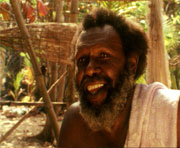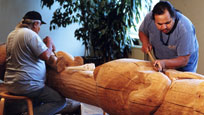Category — Module 2
Internet Evils
Ok, so this might not classify as research so much as it does annoyance, but I think it is worth pointing it out. I was very interested in Amy Parent’s video and did some searches on aboriginal youth. And what pops up but this? http://aboriginalyouth.net/ . I think it is fair to say this could do some damage as it relates to stereotyping. Related to this is the site synopsis I recently read for the Aboriginal Youth Network, which sounded to have so much promise but turned up a dead link.
October 13, 2010 No Comments
Native Networks
The Native Networks website is related to the National Museum of the American Indian. The Museum is part of the Smithsonian institute.
Native Networks, in their words, “. . . is dedicated to presenting and disseminating information about the work of Native Americans in media.
. . . Native Networks Website has four goals:
To provide a representation of current work in the field of Native American media including film, video, radio, television and new media.
To provide information to the public about the outstanding media productions which have been presented in the museum’s programs.
To provide the FVC and NMAI a way to maintain regular and frequent contact with the community of Native American independent media producers.
To provide a space for Native media makers to exchange ideas and to gather professional information.”
The site tends to view all First Nations people as a homogeneous group. There are no distinctions made for specific tribes, or even between north and south American Native peoples.
Resources include information about the Native American Film and Video Festival, plus links to other media related sites involving radio, film, video, other film festivals, and distributors.
http://www.nativenetworks.si.edu/nn.html
October 13, 2010 No Comments
The Oka Crisis
This past summer of 2010 marked the 20th anniversary of the Oka Crisis.
Through video, media archives and print material we continue today to learn from this event and the stories that people share about it. This crisis received extensive media attention across Canada and around the world. I recommend the movie Kanehsatake: 270 Years of Resistance (The Oka Crisis) (National Film Board, 1993) which can be viewed at
http://video.google.com/videoplay?docid=8939345967488327634#
It is an excellent recounting of the events, also giving the historical context. It is a feature-length, multi-award winning documentary by Native American filmmaker Alanis Obomsawin. It is set in the thick of the armed confrontation between Native American Mohawks and Canadian government forces during the 1990 two-and-a-half month standoff in the Mohawk village of Kanehsatake near the village of Oka in Quebec. There was one fatality in the crisis, Corporal Lemay.
For CBC archival information see: http://archives.cbc.ca/politics/civil_unrest/topics/99/
Twenty years after the death of Corporal Lemay, his sister Francine came forward with the story of her journey of learning, healing and reconciliation and with the publication of her French translation of the book At The Woods Edge: An Anthology of the History of the People of Kanehsatake. Francine Lemay initiated this translation project recognizing that even 20 years after the Oka event, the Francophone community around her lacked information and understanding of the Mohawk people’s history and culture.
See:
http://www.goodminds.com/booksatom/At-The-Woods-Edge-An-Anthology-of-the-History-of-.html
http://www.francinelemay.com/my-story.html
http://www.cbc.ca/canada/story/2010/07/07/f-francine-lemay-oka-reconciliation.html
October 13, 2010 No Comments
Circle of Rights
Circle of Rights is a series of 30 modules in a training program for activists about economic, social, and cultural rights.
It is published by the International Human Rights Internship Program, University of Minnesota.
Circle of Rights is aimed “primarily at trainers who are or will be engaged in training human rights activists as well as development workers, members of organizations representing disadvantaged groups and others who are addressing economic, social and cultural issues. The hope and expectation is that trainers working with these various groups will be able to take the material in the manual and, if necessary, adapt and expand upon it to conduct training programs on ESC rights and ESC rights activism.”
I first came across this site as I was trying to understand better issues around cultural rights, which is the focus of Module 17. The content of this module is relevant to Indigenous cultural rights.
See: http://www1.umn.edu/humanrts/edumat/IHRIP/circle/modules/module17.htm
However, Module 6 focuses only on the “perspectives, experiences and standards” of Indigenous peoples.
See: http://www1.umn.edu/humanrts/edumat/IHRIP/circle/modules/module6.htm
In the modules I have looked at, case examples are given from different parts of the world. Other modules may interest you. See the Table of Contents at
See: http://www1.umn.edu/humanrts/edumat/IHRIP/circle/toc.htm
October 13, 2010 No Comments
Rabbit Proof Website
Despite the fact it was shut down as part of Australia’s austerity measures earlier this year (who needs culture anyway?), the culture.gov.au web site has really good chronological breakdown of Indigenous film making in Australia. Some really significant films are discussed here, many that I’ve never heard of, with links to clips and even a few full length features. Also some great links to other Indigenous resources with an Australian focss. This may be of particular interest to people doing comparative studies. Many of these films are mentioned in the Hearne article and offer some great comparisons with Canadian First Nations film production efforts.
October 13, 2010 No Comments
Aboriginal Contexts and Worldviews
Alternative Dispute Resolution (ADR) in Aboriginal Contexts: A Critical Review
Prepared by Wenona Victor (Sto:lo Nation) for Canadian Human Rights Commission, April 2007 (41 pages).
http://www.chrc-ccdp.ca/pdf/adrred_en.pdf
I came across this document when one of our discussion threads led to sharing meanings of “Indian Time.” The title also caught my attention as I had recently read this statement in John Ralston Saul’s book A Fair Country (2008): “our courts are far ahead of our political scientists, politicians and philosophers…[they] have now understood the First Nations’ assumptions at the time of the treaties” (p. 64).
In discussing alternative dispute resolution (ADR), Wenona Victor draws on current studies and reflections about Aboriginal contexts related to the role of power, language, women’s voices, culture and land; and the contrast of worldviews including concepts of individuality, unity of life, time, societal organization, leadership, reciprocity. “By posing both theoretical and practical questions, the text is a means by which colonial assumptions maybe be deconstructed. This analysis is helpful in shedding light on several colonial assumptions that often feed, and in many instances impede, the proper resolution of disputes between two often diametrically opposed worldviews” (p. 7).
This document informed me on other matters in addition to “relationship building in ‘Indian’ time” (p. 29). For example, my thinking was challenged in the section about the “elicitive” approach to mediation (i.e. an approach requiring the mediator to take the lead from the parties involved and recognize the process as both a functional and political one) and the Western cultural presuppositions involved in the belief that “the best mediator will be an outsider, impartial and unbiased” (p. 30). As an example that “claiming Western norms and values as universal undermines” a process like mediation, the author writes, “oral tradition within Indigenous communities…often dictates who can and cannot speak on a subject. Those who are considered impartial and neutral are also disconnected and lack personal involvement; they are therefore not authorized to speak” p. 32).
October 13, 2010 No Comments
Participatory video
Participatory Video is an experiential learning tool for individuals and groups to grow in self-confidence and trust, and to build skills to act for change. Participatory Video methods value local knowledge, build bridges between communities and decision-makers, and enable people to develop greater control over the decisions affecting their lives.
On this site, many of the communities involved are indigenous communities. The viewer can choose to view videos by issues (includes indigenous rights) or by category (e.g. advocacy, training). These are videos made by community members for themselves. Often indigenous languages are used with English subtitles.
October 12, 2010 No Comments
Indigenous Peoples Issues & Resources
http://indigenouspeoplesissues.com/
Indigenous Peoples Issues and Resources describes itself as a worldwide network of “concerned social scientists, activists, scholars, laypeople, indigenous people, and others who all share a combined goal: to provide resources, news, articles, and information on current issues affecting indigenous and tribal peoples around the world.”
Founded in 2007 by Peter N. Jones, Indigenous Peoples Issues and Resources has been fighting continuously for the rights of indigenous and tribal peoples.
There are links to weekly news, regions of the world, issues, resources, and books. I have gone to resources – Indigenous Peoples Videos, Movies, and Audio Recordings and found about 340 on the range of issues. The videos I have viewed have been informative.
October 12, 2010 No Comments
Totem: the Return of the G’psgolox Pole
This film, Totem: the Return of the G’psgolox Pole, is such a wonderful story and example of respect and cross cultural collaboration. I know from speaking to people in this community what an important moment it was for the Haisla and how much respect and healing resulted from the entire process. In addition to this film, you have to love how comprehensive a resource the NFB site is, for First Nation subject matter and beyond. Yes, as taxpayers it often seems we have to pay dearly to be Canadian, but cultural resources like this one make it seem worth it.
October 12, 2010 No Comments
Urban Native Girl Stuff
After watching the Amy Parent interview, I wanted to learn a little more about urban youth. This was one of the sites that I came across, and it has a number of posts on the page about designer clothing, jewellery, and purses inspired by traditional aboriginal clothing or traditions. The posts are more than just “here is the latest!” though. The author takes time to consider how the commodification of her culture impacts how it is viewed by others and how (or if) the history behind the items has been considered.
• Great Cowichan Debate entry: http://www.lisacharleyboy.com/2010/03/great-cowichan-debate.html
• Feather Pendant entry: http://www.lisacharleyboy.com/2010/09/feather-dusters.html
• Native Inspired Fashion category: http://www.lisacharleyboy.com/search/label/Native%20Inspired%20Fashion
In addition to blogging about native inspired fashion, the author also talks about living an urban life in Toronto. All in all, it is another interesting look inside the life of urban aboriginal youth.
October 12, 2010 No Comments






